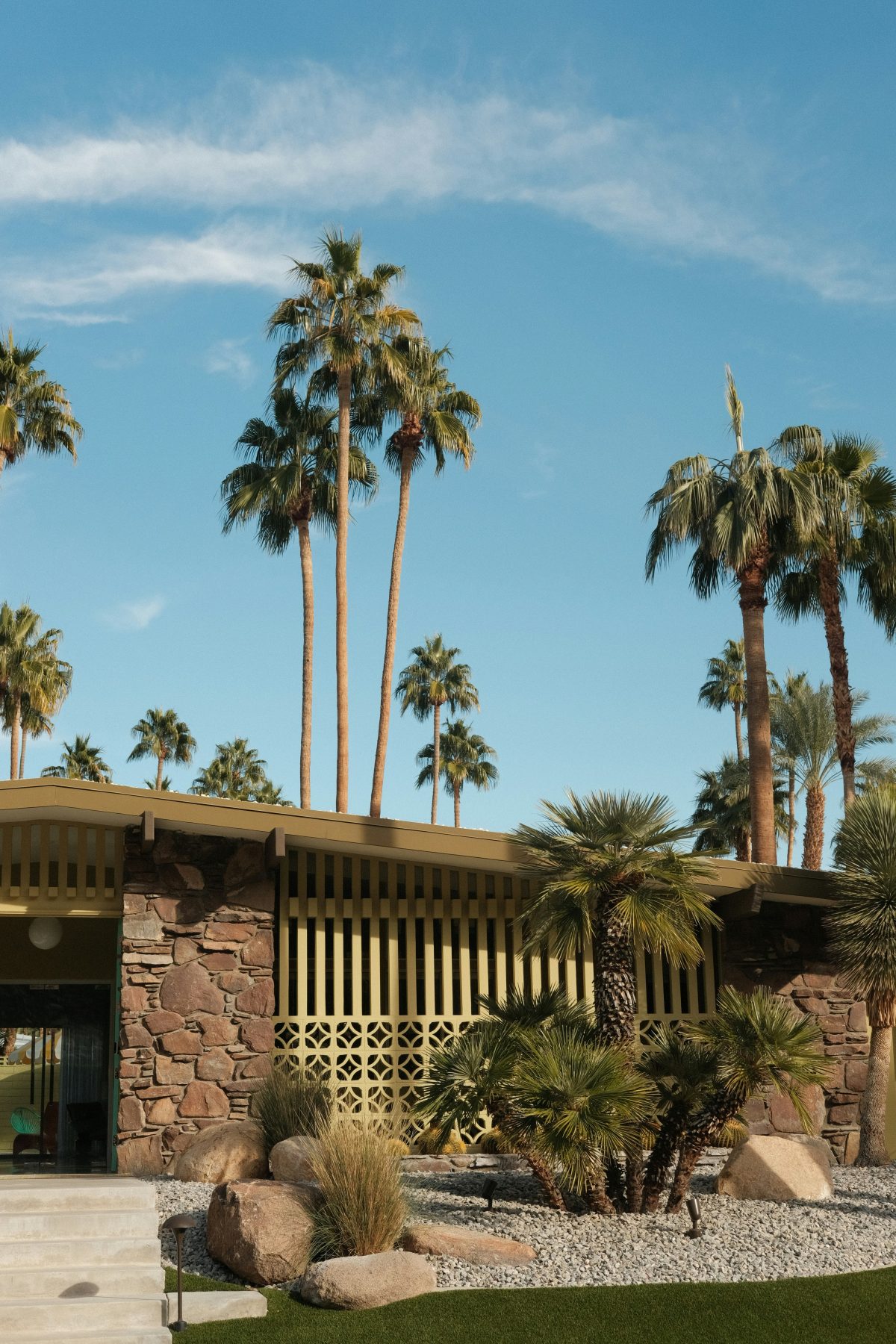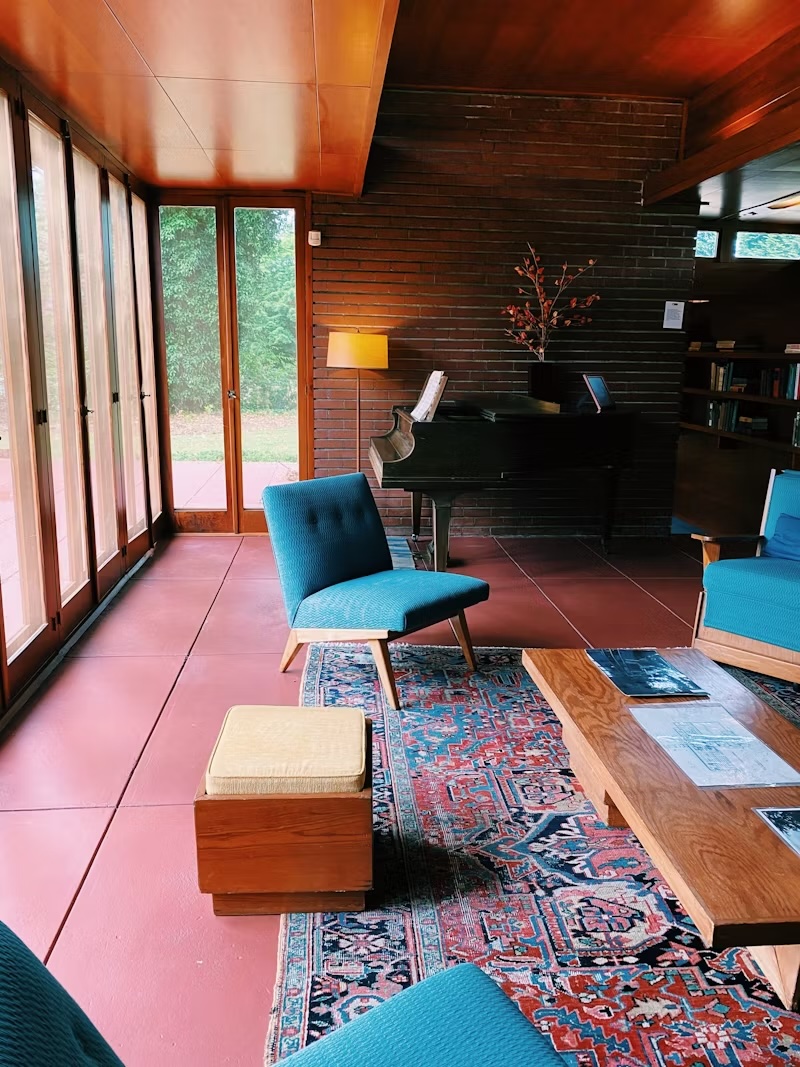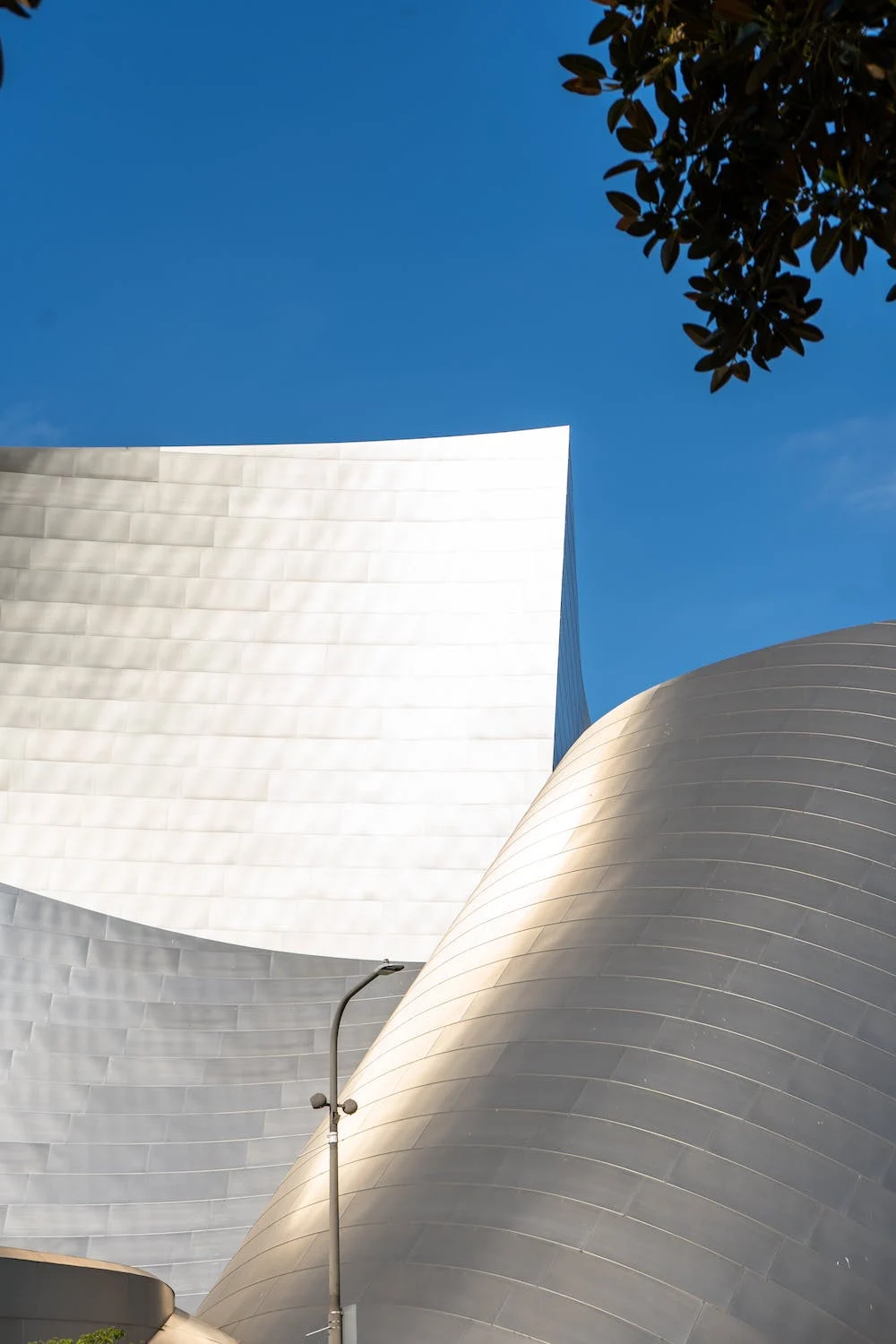Introduction
Mid-century houses, a term that evokes a profound nostalgia for a style both understated and daring, refer to a design movement flourishing from 1945 to 1969. Characterised by their clean lines, organic forms, and seamless integration with the environment, these homes stand as a testament to a period that radically transformed architectural thought and practice. This blog post aims to delve into the essence of mid-century houses, exploring their origins, defining features, enduring popularity, and the challenges faced in preserving these architectural gems for future generations.
Historical Context
The mid-century modern movement emerged in the aftermath of World War II, a period marked by an acute housing shortage and a booming economy. Architects and designers, inspired by the need for affordable, functional, and aesthetically pleasing living spaces, embarked on a quest to redefine residential architecture. Figures like Frank Lloyd Wright, whose Usonian homes laid the groundwork for mid-century design, and Charles and Ray Eames, pioneers of modern furniture, played pivotal roles in shaping the movement. Influenced by the principles of the Bauhaus and the International style, mid-century architects sought to create homes that were not only accessible to the masses but also harmonious with their surroundings. Economic growth and technological advancements facilitated the use of new materials and construction methods, further propelling the popularity of mid-century designs.
Characteristics of Mid-Century Architecture
Mid-century architecture is distinguished by a number of key characteristics that underscore its philosophy of simplicity, functionality, and harmony with nature. These principles were applied not only to the architectural design but also to the furniture and decor, creating a cohesive aesthetic that has stood the test of time.
- Simplicity and Clean Lines: One of the most recognizable aspects of mid-century design is its simplicity. Architects of the time stripped away unnecessary details to focus on the building’s form and function. The result was structures with clean lines, geometric shapes, and an uncluttered look that emphasized the beauty of the building’s materials and craftsmanship.
- Integration with Nature: Mid-century homes were designed to blur the boundaries between the indoors and outdoors. Large windows, sliding glass doors, and open floor plans were common features that allowed natural light to flood interior spaces and provided expansive views of the surrounding landscape. This connection to nature was not only aesthetic but also philosophical, reflecting a desire to live in harmony with the natural world.
- Innovative Use of Materials: The mid-20th century was a time of technological innovation, and architects took advantage of new materials and construction techniques. Steel, glass, and concrete were used alongside traditional materials like wood and stone, allowing for greater flexibility in design and the creation of new forms and structures. This experimentation with materials also extended to furniture design, with iconic pieces like the Eames lounge chair and the Noguchi coffee table becoming symbols of mid-century modern style.
- Open Floor Plans: The layout of mid-century homes was revolutionary at the time. Open floor plans that combined living, dining, and kitchen areas into a single, large, and flexible space were a departure from the compartmentalized rooms of earlier designs. This openness facilitated a more casual and social way of living, reflecting the changing lifestyles of the post-war era.
- Iconic Furniture and Decor: Furniture and decor played a crucial role in mid-century design, with pieces that were as functional as they were beautiful. Designers like Eero Saarinen, Harry Bertoia, and George Nelson created furniture that was innovative, comfortable, and aesthetically pleasing, often using new materials and techniques. The emphasis was on pieces that were versatile, easy to maintain, and suited to the informal, flexible nature of mid-century homes.
These characteristics combined to create a style that was ahead of its time, embodying ideals of simplicity, functionality, and a deep connection to the natural environment. Mid-century architecture and design continue to influence contemporary aesthetics, testament to the enduring appeal and relevance of this iconic style.
The Resurgence of Mid-Century Modern Design
The revival of mid-century modern design in recent years can be attributed to several factors, each underscoring the timeless appeal and versatility of this style. From television and film to interior design and architecture, the mid-century aesthetic has captured the imagination of a new generation, leading to a widespread appreciation for its elegance, simplicity, and functionality.
- Aesthetic Timelessness and Flexibility: One of the key reasons for the resurgence of mid-century design is its ability to blend seamlessly with other styles. The clean lines, organic shapes, and minimalistic approach of mid-century pieces allow them to fit into various interior design schemes, from contemporary to eclectic. This flexibility has made mid-century design a popular choice for decorators and homeowners looking to create spaces that are both stylish and timeless.
- Cultural and Media Influence: The portrayal of mid-century modern design in popular culture, particularly in television shows and movies set during the 1950s and 60s, has played a significant role in its revival. These portrayals have introduced a wider audience to the beauty and sophistication of mid-century aesthetics, sparking interest and admiration for the style.
- Sustainability and Craftsmanship: As contemporary society grows more conscious of sustainability and the value of craftsmanship, mid-century design—with its emphasis on quality materials, durability, and functionality—has gained renewed appreciation. The use of natural materials and the focus on craftsmanship in mid-century pieces resonate with current trends towards sustainability and ethical consumerism.
- Nostalgia and Historical Interest: For some, the appeal of mid-century modern design is rooted in nostalgia and a fascination with the optimism and innovation of the post-war era. This historical interest, coupled with the aesthetic appeal of mid-century design, has driven a demand for both authentic vintage pieces and new creations inspired by mid-century styles.
- Digital Accessibility and Inspiration: The internet has played a crucial role in the resurgence of mid-century design, making it easier than ever for enthusiasts to discover, learn about, and purchase mid-century furniture and decor. Social media platforms and design blogs offer endless inspiration, showcasing the versatility of mid-century pieces in a variety of settings and encouraging a new generation of designers and homeowners to embrace the style.
This resurgence is not merely a trend but a recognition of the enduring qualities of mid-century design: its ability to create functional, beautiful spaces that stand the test of time. As we continue to navigate the complexities of modern living, the principles of mid-century design—simplicity, connection to nature, and thoughtful craftsmanship—remain more relevant than ever.
Decorating with a Mid-Century Modern Aesthetic
Embracing mid-century modern design doesn’t require living in a period-specific home. With the right approach, you can infuse any space with the elegance, simplicity, and functionality that define this enduring style. Here’s how:
- Start with Iconic Furniture Pieces: Central to achieving a mid-century modern look is selecting the right furniture. Opt for pieces with clean lines, organic shapes, and minimal ornamentation. Iconic chairs like the Eames lounge chair, the Saarinen tulip chair, or the Noguchi coffee table serve as perfect focal points around which to build your space.
- Emphasize Functionality and Simplicity: Mid-century design is all about functionality. Choose furniture, decor or even house numbers that serve a purpose, avoiding clutter and unnecessary embellishments. This simplicity should extend to every aspect of your space, from the layout to the choice of materials.
- Incorporate Natural and Organic Elements: Bringing elements of nature into your home is a hallmark of mid-century design. Use wood, stone, and other natural materials in your furniture, flooring, and decor. Indoor plants are also a great way to add life and color while maintaining an organic feel.
- Play with Colors and Patterns: While mid-century modern design often features wood tones and neutral colors, don’t be afraid to experiment with bold colors and geometric patterns. Accent walls, throw pillows, or artwork can introduce vibrant hues and interesting textures without overwhelming the space.
- Let There Be Light: Natural light is a key component of mid-century architecture. Maximise light in your space with large windows and avoid heavy, dark window treatments. For artificial lighting, choose fixtures with geometric shapes and materials like brass or wood that complement the mid-century aesthetic.
- Mix and Match with Caution: While mid-century modern pieces can blend well with other styles, it’s important to maintain a cohesive look. Mix and match carefully, ensuring that each piece contributes to the overall aesthetic without creating a disjointed feel.
- Seek Out Authentic and Reproduction Pieces: Authentic mid-century furniture can be a fantastic investment, adding character and authenticity to your space. However, high-quality reproductions offer the same aesthetic appeal at a more accessible price point. Whichever route you choose, focus on craftsmanship and materials to ensure longevity and style.
By following these tips, you can create a space that pays homage to the mid-century modern ethos while catering to the demands of contemporary living. The key is to balance the style’s iconic elements with your personal taste and lifestyle, creating a home that is both stylish and uniquely yours.
As we’ve navigated through the historical context, defining characteristics, and the resurgence of mid-century modern design, it’s evident that this style has left an indelible mark on the fabric of contemporary architecture and interior design. To wrap up our discussion, let’s briefly highlight some iconic mid-century modern houses that epitomise the movement’s groundbreaking approach to residential architecture. These case studies serve not only as sources of inspiration but also as testament to the enduring legacy of mid-century design principles.
Case Studies: Iconic Mid-Century Modern Houses
- The Eames House (Case Study House No. 8): Designed by Charles and Ray Eames, this landmark structure in Pacific Palisades, California, is a testament to the versatility and innovation of mid-century design. Built in 1949 as part of the Case Study House program, it features a prefabricated steel structure filled with glass and a mix of off-the-shelf and custom elements. The Eames House showcases the possibilities of residential design within a post-war context, emphasising the harmony between the built environment and natural landscape.
- Fallingwater by Frank Lloyd Wright: Although predating the mid-century modern movement, Fallingwater (1935) in rural Pennsylvania embodies many principles that would come to define mid-century design, such as integration with nature, open interior spaces, and innovative use of materials. Wright’s masterpiece, with its dramatic cantilevers over a natural waterfall, remains one of the most iconic examples of 20th-century architecture.
- The Stahl House (Case Study House No. 22): Designed by Pierre Koenig in 1960, this Los Angeles house is perhaps one of the most photographed homes in the world, celebrated for its stunning views through floor-to-ceiling glass walls and its elegant, functional design. Perched atop the Hollywood Hills, the Stahl House exemplifies the mid-century modern ethos of blending indoor and outdoor spaces seamlessly.
- The Miller House: Designed by Eero Saarinen in 1957 in Columbus, Indiana, the Miller House is a hallmark of mid-century residential architecture, featuring an open layout, flat roof, and expansive use of glass. Its interior, designed by Alexander Girard, showcases the period’s iconic furniture and a playful use of color and pattern, embodying the collaborative spirit of mid-century design across disciplines.
These iconic houses not only reflect the innovative spirit of their creators but also continue to inspire architects and designers today. Their enduring appeal lies in their ability to respond to the needs and aspirations of their time while remaining timeless and relevant.
Conclusion
The exploration of mid-century houses reveals a style that transcends mere aesthetics to embody a philosophy of living that is as relevant today as it was in the mid-20th century. Mid-century modern design advocates for simplicity, connection with nature, and the thoughtful integration of form and function, principles that continue to resonate in our quest for meaningful and sustainable ways of living.
As we look to the future of design and architecture, the lessons of the mid-century modern movement provide a foundation upon which to build spaces that are not only beautiful but also deeply connected to the human experience. Whether through the preservation of historic mid-century homes or the incorporation of mid-century principles into contemporary designs, the legacy of this iconic style continues to influence and inspire.





